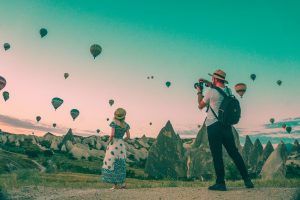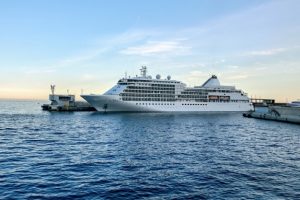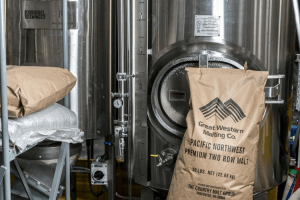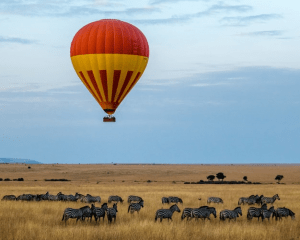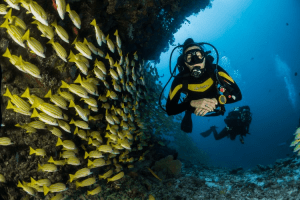
Cuba’s untouched landscapes, pristine waters and crisp fresh air are so clean and incredibly soothing for the soul! One can sit for hours listening to the birds chirping…
What makes it even more exciting is the birdlife on the island. There are 371 species described, of which there are 26 endemic species currently recognised. Unfortunately, many of them are endangered, and one – the Cuban Macaw and Ivory-Billed Woodpecker – has even become extinct.
There are other beautiful birds still around, like the Bee Hummingbird, the smallest, most colourful bird you have ever seen. At the size of a 10 cent coin, it’s even a wonder it can fly! There are some other colourful ones like the Cuba Tody – this one is our favourite, it is just so cute and exquisite – the Cuban Trogon – boasting the colours of the Cuban flag – and the Cuban Parrot – amazingly green and red bird.
Other birds are better known for their enchanting songs, like the Cuban Solitaire, the Zapata Wren, the Cuban Gnatcatcher, and the Cuban Grassquit. Listening to these lightens up your day.
And if the endemics alone weren’t exquisite enough already to admire, there are plenty of other birds that make Cuba their island of choice to visit. Some non-endemics are winter residents coming from North America between August and October to spend the winter months in a warmer climate (which I can understand!). These are various birds like ducks, gulls, warblers, sparrows and shorebirds.
Then there are the spring migrants coming from South America, arriving between late February and May for the nesting season. The spring migration brings about the Gray King Bird, the Antillean Nighthawk, the Black-whiskered Vireo, the Cuban Martin and Wilson’s plover. The summer residents leave in September/October each year.
The main migration corridors are Guanahacabibes in Pinar del Rio, Cardenas in Matanzas, Santa Fe in La Habana, Camaguey in Ciego de avila and Gibara in Holguin, where you will find an abundance of such beauties.
The main nesting period is between March and July. We won’t break down each bird’s habits right here; we want to give you a little insight on things that may help you spot them. Things like the habit of what I’d call ‘nest sharing’. Not all birds will build their nests. Some will use the ones other species have created. The woodpecker’s cavity is later used by the Cuban Pygmy-Owl,
the Bare Legged Owl, the Cuban Parakeet, the Rose-throated Parrot and the Cuban Trogon. Talk about getting bang for your buck! Other birds may borough, whilst others build nests using plant and animal fibres. Knowing their nesting helps detect them.
There are several places you can go. There’s Vinales, Las Terrazas, San Diego de Los Banos, La Guiro, Soroa, where you can see the Cuban Solitaire and the Cuban Grassquit, predominantly in Western Cuba.
Zapata Peninsula is an exotic area of nearly 5000 square kilometres of untouched wetlands, thus having several sites to spot amazing birdlife, like Playa Larga, Bremejas, Palpite, La Turba, Las Salinas and Hatiguanico.
We especially like Western Cuba and Zapata Peninsula as they have a large concentration of both endemic and migratory birds to spot, which is why we chose these to showcase in our Birds of Cuba Tour.
At the Cayos, being the areas of Cayo Coco, Cayo Paredon Grande and Cayo Guillermo, you’ll find the Cuban Sparrow, the Cuban Gnatcatcher, the Thick-billed Vireo, and the Bahama mockingbird.
Suppose you keep venturing East to Sierra de Najasa, Sierra de Cubitas, or Rio Maximo in Camaguey. In that case, you can admire the Cuban Parakeet, the Giant Kingbird, the Palm Crow, the Plain Pigeon and the most significant nesting ground of Flamingos, which is spectacular.
And if you make your way to the most Eastern part of the island, you must visit the Parque Nacional Alejandro de Humboldt to find the Cuban Kite. Whilst you are here, you may also take your time and genuinely discover the natural wonders in the area!
Let’s face it; there are always amazing birds around. Weather-wise, January to April is lovely. If you also wish to see most of the migratory birds, October and November are fantastic months, mind you, these months are still quite wet.
Like different seasons will have other birds, extra time of the day also has different birds. So it is well worth going with a guide who knows the places and best times to visit to capture sight of more birds.
Because you will be venturing out into untouched landscapes that have lots of water – thus mosquitoes – it is best to wear lightweight, long sleeve shirts and long pants to keep you from mozzie bites. Also, make sure you wear a hat, and waterproof boots, especially in the wetter months. Colour-wise, green/grey/tan is the best to help you blend into the surroundings.
We also recommend bringing a guidebook; our go-to is the Endemic Birds of Cuba by Nils Navarro. Bring your binoculars, notebook, waterproof pen, mosquito repellent, and sunscreen. And whilst it is not essential equipment, it is nice to have a camera handy for capturing a moment with these beautiful creatures.
No bird calls. We do not want to create any stress for the birds, so we ask you to refrain from using these.
We keep our bird watching groups small, and there is a reason for that. We want to ensure that we protect the welfare of the birds and their habitats.
We will ask you not to go too close to the birds’ territory, definitely be extra cautious with nests. To ensure this happens and to not disturb the birds, we ask that you walk slowly and cautiously. Keep your voice down – it is best to observe in silence. No flash or shiny objects are to be used on a birdwatching tour as this can disturb the birds. The birds’ welfare is our highest priority.
If we see anything rare, we will report them to the relevant authorities. Things like no littering, trampling on vegetation or breaking branches go without saying. Sticking to the rules means we can keep birds protected and enjoyed by others in the future.
Read our blog on 3 Best USA State Parks For Viewing Wildlife

